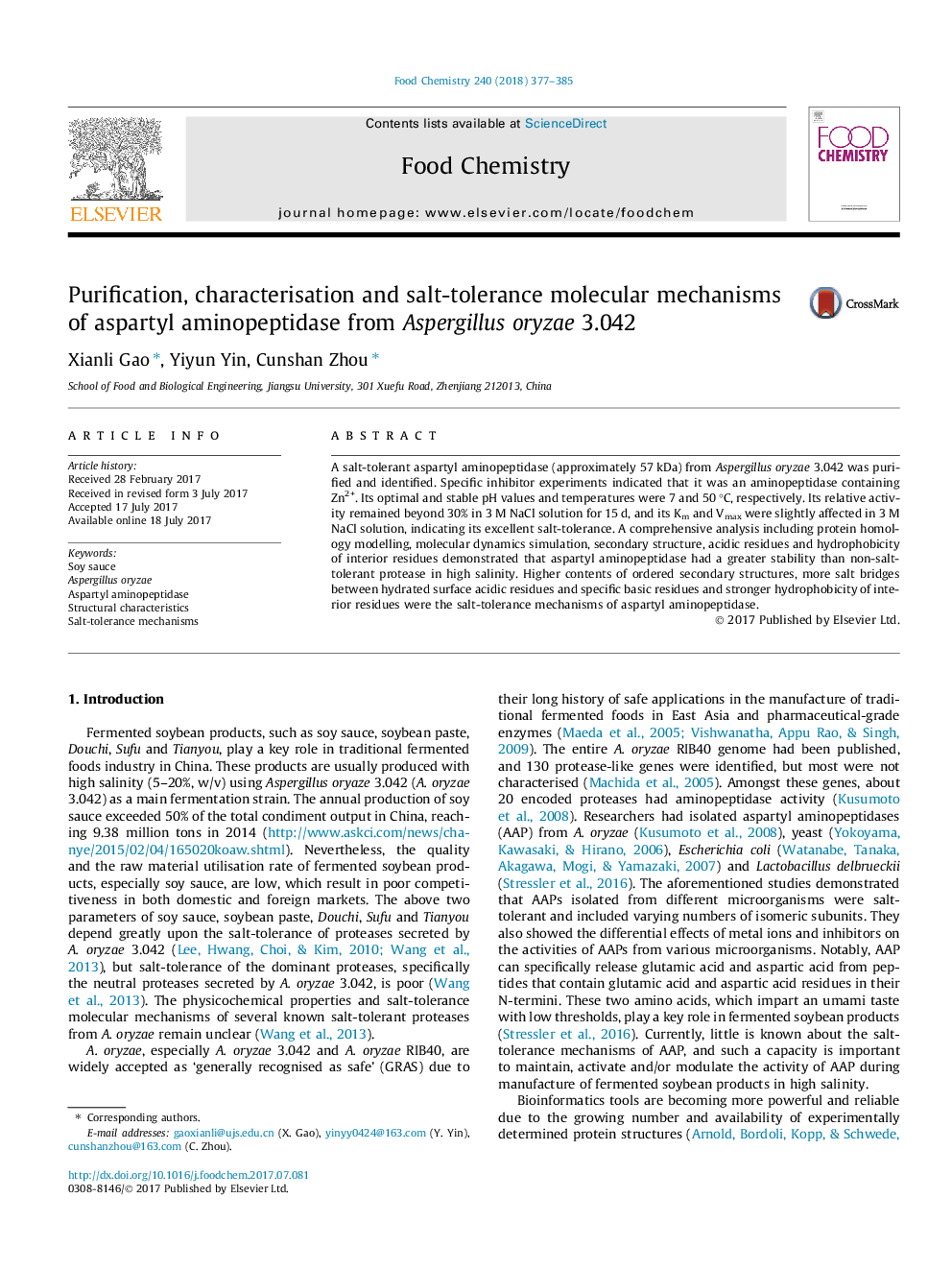| Article ID | Journal | Published Year | Pages | File Type |
|---|---|---|---|---|
| 5132475 | Food Chemistry | 2018 | 9 Pages |
â¢Salt-tolerant aspartyl aminopeptidase from A. oryzae 3.042 was firstly identified.â¢Salt-tolerance of this aminopeptidase were assayed and validated.â¢Strong salt bridge, structure, hydrophobicity were its salt-tolerance mechanisms.
A salt-tolerant aspartyl aminopeptidase (approximately 57 kDa) from Aspergillus oryzae 3.042 was purified and identified. Specific inhibitor experiments indicated that it was an aminopeptidase containing Zn2+. Its optimal and stable pH values and temperatures were 7 and 50 °C, respectively. Its relative activity remained beyond 30% in 3 M NaCl solution for 15 d, and its Km and Vmax were slightly affected in 3 M NaCl solution, indicating its excellent salt-tolerance. A comprehensive analysis including protein homology modelling, molecular dynamics simulation, secondary structure, acidic residues and hydrophobicity of interior residues demonstrated that aspartyl aminopeptidase had a greater stability than non-salt-tolerant protease in high salinity. Higher contents of ordered secondary structures, more salt bridges between hydrated surface acidic residues and specific basic residues and stronger hydrophobicity of interior residues were the salt-tolerance mechanisms of aspartyl aminopeptidase.
